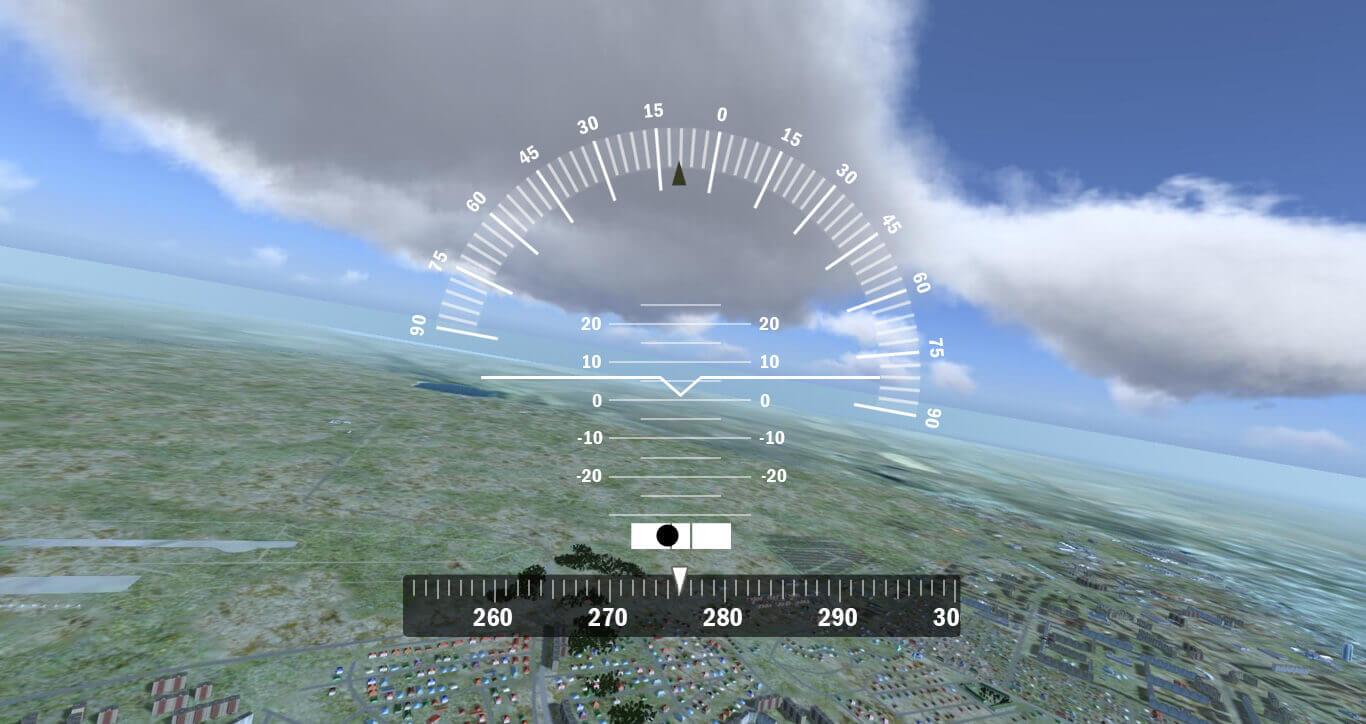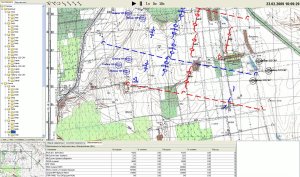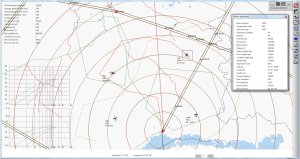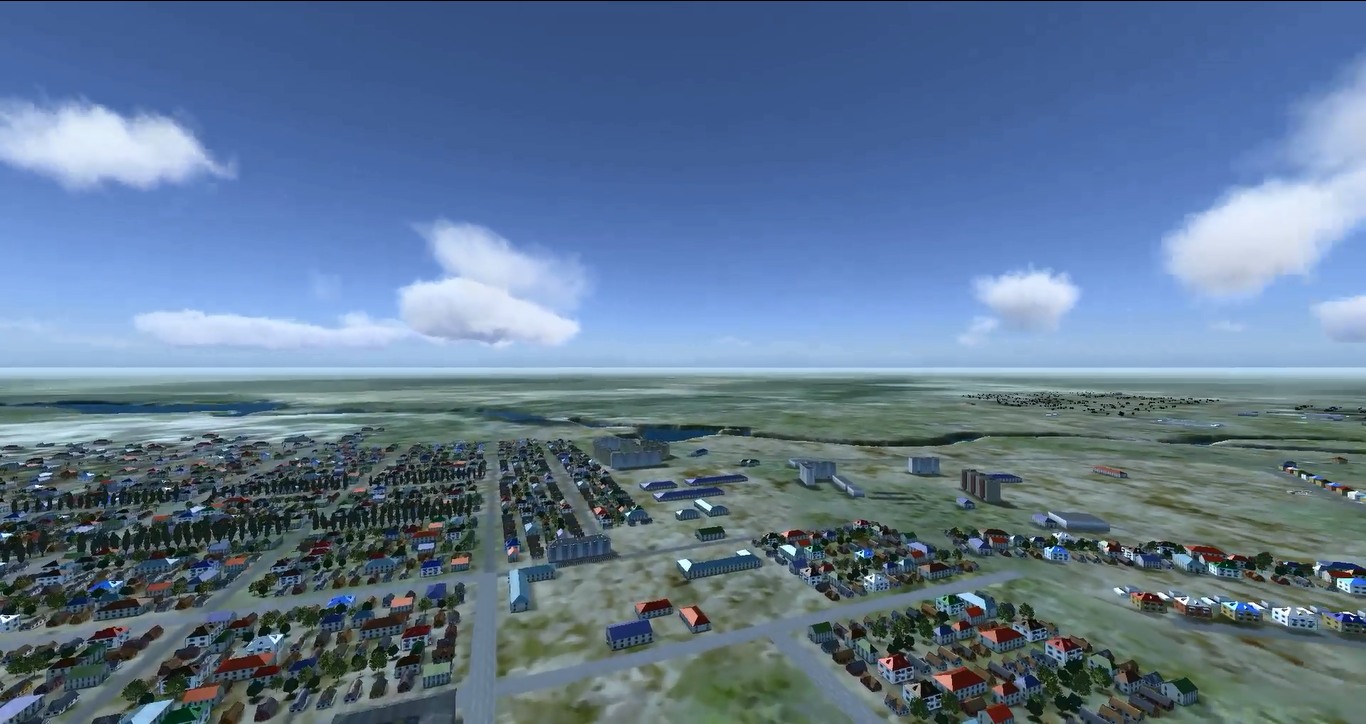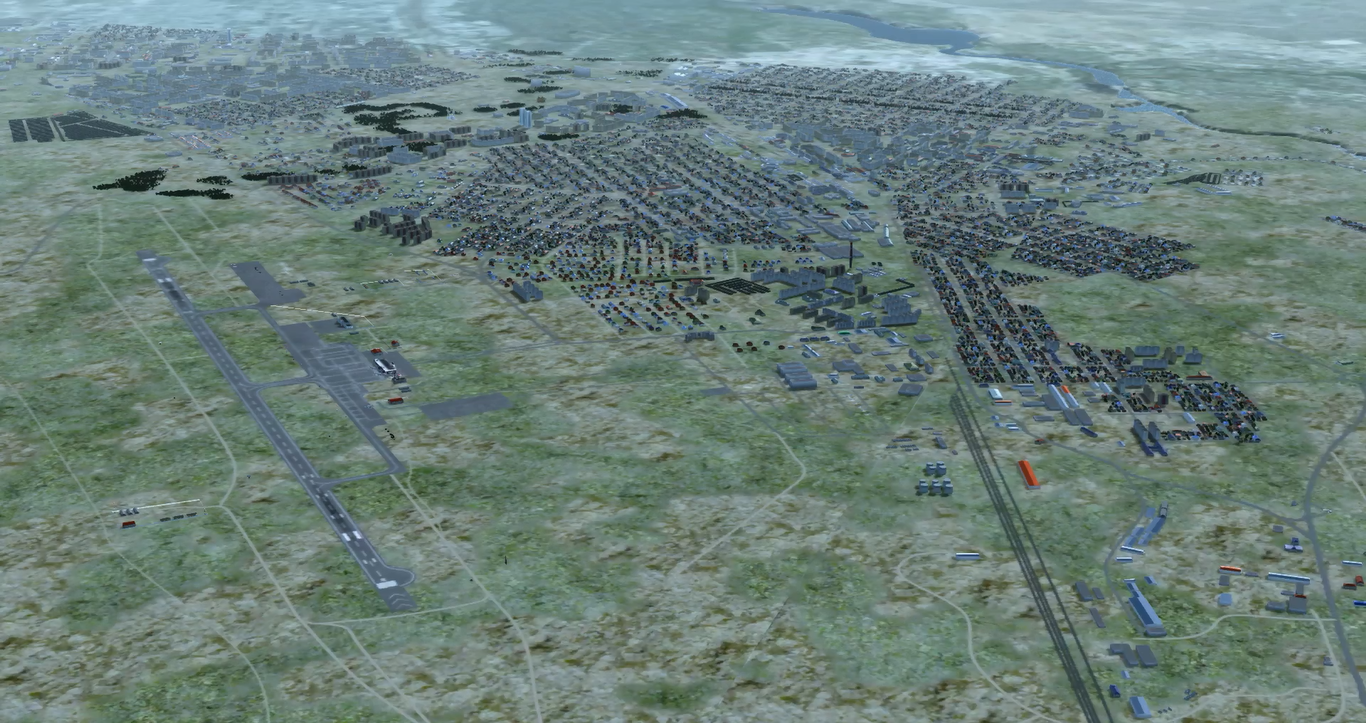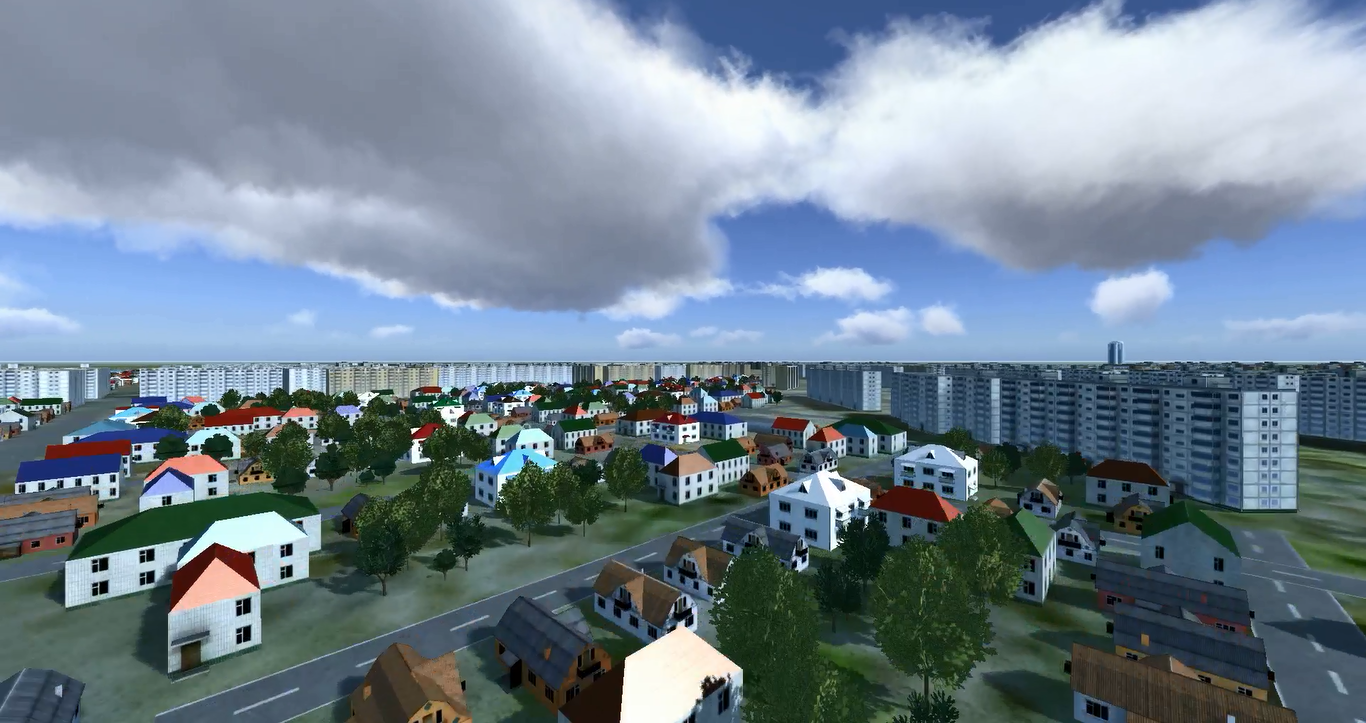Services
Here is screenshot from helicopter flight using PC. Same code is using for flight using computer appliance simulators. On-screen scales are just a feature for simplifying testing.
Overview
We have an expertise in development of software for military simulators. We have 5+ years of experience in developing software for Full Mission Simulators (FMS), Air Traffic Control Simulators, Staff Officer Tactical Trainers, Command & Control Simulators and can develop other military and civil simulators according to customer’s needs. We work as a software partner of simulator development companies to provide them with all the necessary software for the simulators they produce.
We develop our software with the principles of maximal realism for effective teaching of military personnel to work with vehicles, understand tactics or follow military procedures. All processes in our simulators are processed with strong mathematics background and with observing the principles of physics. Aerodynamics is calculated based on aircraft parameters for flight simulators and meteorological conditions, ballistics of ammunition depends on weather conditions and parameters of ammunition and weapons, etc.
Our mission is to be the company that produces high quality Modelling & Simulation (M&S) software solutions that maximally satisfy customer’s needs. So we are ready to develop not only software for air, ground or marine simulators, but also other types of Modelling & Simulation software.
Here you can see flight of helicopter. So, gamepads are used here to control the flight, and helicopter devices are visualized on 2D view. But this code also is using with motion platform and hardware controls interactions
Key points of our services
Software services
- Full development cycle (analysis, implementation, quality assurance, documenting, support) for all types of Modelling & Simulation software development
Simulators development
- Development of software for Command & Control, air traffic control, FFS/FMS (Full Flight Simulators / Full Mission Simulators) simulators
- Development of Computer Based Trainers (CBT) & Trainer Procedure Devices
Applied development
- Experience in such applied development areas as: aerodynamic, flight dynamics and air traffic management modelling; airport facilities modelling; physics calculations and mathematical modelling; on-board systems modelling; vector maps and geospatial development; artificial intelligence (AI) and synthetic environments modelling; HLA and network related development; 3D visualization; database related development;
- Subject-matter expertise in aerodynamic, radar and airport facilities, air traffic dispatching, artillery and joint tactics, electrotechnics. We can also hire specialists in other applied fields on the market
- Simulation of flight dynamics using physics principles, strong mathematical modelling, including aerodynamic modelling based on aircraft parameters.
- Modelling of atmospheric effects, weather and time-of-day conditions for training pilots to operate in different conditions
Working with hardware and hw simulation
- Simulation of on-board systems based on electrotechnical schemes. Both interactions with hardware controls and software interactions
- Development of software for in-cockpit realism: outside world related sounds etc, managing device control force feedback, in-cockpit sounds, device illuminations etc.
- Integration with different types of motion platforms, including 6 degrees of freedom motion platforms, controlling vibration system
- Support of different type of cockpit visualization systems, like spherical screens, synthetic environments helmets etc.
Network & Interoperability
- Network interactions with other simulators or simulator parts using HLA 2010 Evolved protocol (or another interoperability protocol, like DIS, on customer’s request) to train aircrew or for training formation flights and execution of formation combat missions.
- Support of HLA integration with air traffic control simulation to teach pilots and dispatchers to work together.
Instructor operating development
- Instructor operating stations development where an instructor can monitor flight and mission tasks operating, state of on-board devices, environment in 3D and on the maps, introduce device malfunctions etc.
- Media classroom development showing current training in different views with instruments for after-action review
- Development of mission and environment editors for preparation of different trainings
3D and synthetic environments
- Realistic modelling of real-world terrain area with automatic approach, using elevation data, digital vector maps, terrain imagery and 3D models typical for the region or automatic terrain generation according to customer’s needs
- Rich 3D visualization development of huge terrain areas in hundreds of thousands of square kilometers with conformance of this area to the real world (same elevation, land types, objects etc.)
- Virtual world and AI simulation development. Distributed algorithm that calculates movements and actions of all units according to mission editor tasks and their parameters. True physics and ballistic principles are used in simulation core.
- Recording of all activities during simulation time for debriefing and after action review and with the possibility to replay the simulation from any point. Action controls for starting, pausing or stopping the simulations. nVidia PhysX is used for high-performance of physics-related operations
Geospatial development
- Geospatial related development: using digital vector maps for dynamic air and ground environment visualization, for editing environment etc. Geospatial anchoring of all virtual world objects
Air traffic related simulation
- Virtual air traffic modelling and airport facilities modelling using flight dynamic principles and with terrain following. Modelling of airport facilities and environment to teach pilots to operate with them
- Development of software for studying of mutual communications of dispatchers and aircrews.
Our simulators are network-based using HLA 2010 Evolved protocol and can be used for teaching cooperation of the whole crew, dispatcher team or division command simultaneously. Note that HLA is not a limitation for us and we can use other interoperability technologies (like DIS) in our simulator development.
AI that we develop allows teaching a trainee effectively to complete specific mission tasks by introducing virtual environment that has dynamics similar to a virtual world: flying of aircrafts, battle of different types of military units, etc. For example, with such an approach a helicopter simulator trainee can not only study to operate the helicopter flight, but also to complete mission tasks like performing a battle against enemy or operating a helicopter in aggressive battlefield environment.
Air Traffic Control Simulator screen sample
We model terrain to maximally conform some real world area. Elevation, land types, water areas and ground objects maximally correspond to some real world area. So, for example, a trainee can be maximally prepared with the simulator before real-life exercises.
Here you can see relief of terrain that is used in model. This relief is taken from SRTM elevation data and corresponds to terrain in this region.
Here you can see restoration of one of real-world city using digital vector maps, terrain imagery, 3D models library and SRTM elevation map. You can see a roads, river in the top-right, city blocks and bush / tree areas that are generated automatically from correspondent vector map. Airport environment in bottom left was added manually
Here you can see city blocks automatically generated from digital vector map data using typical for this region 3D models. Roads are automatically generated too due to digital vector map.
This framework is used as viewpoints inside cockpits, in free-fly mode at instructor operating stations etc.
Our simulators support different types of hardware: cockpits, display systems, on-board devices etc. All sound and illumination effects hardware for in-cockpit realism is managed by our software.
Here you can see helicopter flight with on-board systems. Due to our pluggable architecture helicopter can be operate both from in-cockpit controls or joystick / game controls.
On-Board Systems Framework is used for both-way interactions between simulator and hardware cockpit devices. This framework is also used in instructor operating stations to show the instructor the current state of the devices and allow him to introduce device malfunctions (such as an engine failure, ) for teaching the crew to operate an aircraft in emergency situations.
We develop our simulators based on architecture approach.We extract everything that can be reused in other simulators or in the same simulator as a reusable module. Owing to this our approach allows us to develop a new simulator or extend the existing one rapidly, with minimal efforts, costs and terms. You can read precisely about our approach in subsection of this section.
As a part of Virtual World Engine, AI Engine has been developed. This engine lets all units make their movements and actions to complete their mission tasks.
Here you can see in 3D attack of mechanized infantry as part of Command & Control Simulator. This formation is led by Artificial Intelligence that is part of our Synthetic Environments solutions
You can read precise subsections of this section for getting more details about our services.

